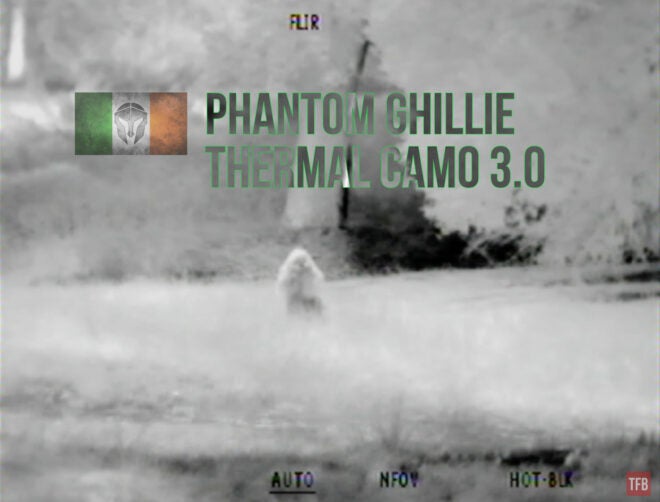If you clicked on this article, then I hope you have been following along with my Thermal Camo series. With the help of my friends, I tested various materials to see if they could work as makeshift thermal camouflage. This time I was invited to test out actual thermal camouflage – the Phantom Ghillie by Phantom Defense.
More Thermal Camo @ TFB:
- Friday Night Lights: Does Thermal Camo Work?
- Friday Night Lights: Thermal Camo 2.0 – Testing Resumed
- Friday Night Lights: El-Op (Elbit) CORAL-SD MWIR Thermal Spotter
Phantom Defense Phantom Ghillie – Thermal Camouflage
Last June, David of Overwatch Strategies reached out and invited me to help him test a relatively new thermal camouflage by Phantom Defense. David was a sniper in the military. His U.S.-based company provides long-range interdiction services.
Phantom Defense is based out of Ireland and their Phantom Ghillie has been tested by various European special forces. I googled them and came across these two YouTube videos.
I was skeptical at first. I have seen other companies claim they have thermal camouflage but are reluctant to let me borrow them for independent testing. Often their videos use off-the-shelf commercial thermal devices to test their thermal camo and it is tested at close distances. However, the first video I showed above used a SAFRAN JIM LR which is my all-time favorite cooled thermal device, which I wrote a review that you can read here. The video looks like it was filmed through the eyepiece but it seems the Phantom Ghillie was masking the person’s thermal signature. This video changed my mind and I could perform that test myself since I have a JIM LR.

Photo by Overwatch Specialties
Once David received the Phantom Ghillie he had to assemble it. Phantom Defense sent him the complete kit. It consists of various color Phantom Fibers (the strands) and there is a color chart for different environments.
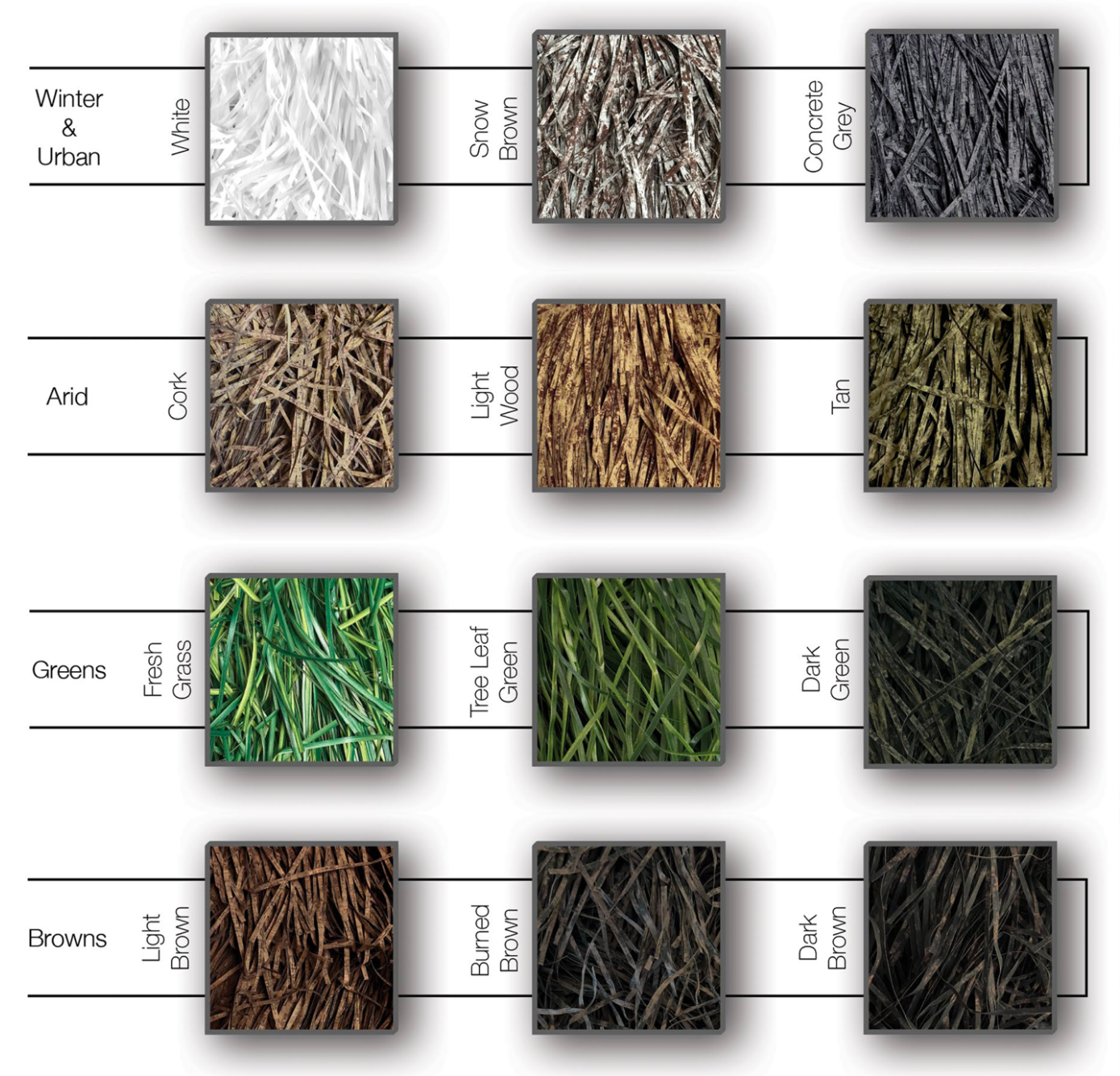
Photo by Phantom Defense
It took four adults eight hours to fully assemble the Phantom Ghillie. You choose the phantom fibers that you want. Put them all in a large box and mix up the fibers. Grab five random strands and fold the bundle in half. Then loop it around and tie it to the base material of the Phantom Ghillie. The Phantom Ghillie is made up of a hooded cloak that has sleeves. It has a Multicam-like pattern printed on the base material and has daisy chain-like straps sewn onto it. You need to tie two bundles per loop for a total of ten strands per loop.

Once the Phantom Ghillie was assembled, we scheduled to get together and test it in mid-July. One of the things Phantom Defense has not tested with their Phantom Ghillie is extreme heat. When I met up with David and his former SAS friend to test the thermal camo, it was 104ºF (40ºC). Below is the Phantom Ghillie laying in the grass. The color choice seemed odd to me but it was too late to make changes. Plus I did not really care about the color as that is a “simple” fix. Choose better colors next time. I was there to test how well it mitigates thermal detection.

Here is a close-up of the Phantom Fibers. It is hard to capture on camera but it has some metallic shine to it. I am not sure if that is by design and part of the thermal mitigation properties. Well, this is why I was there, to test it.


I brought my Beezcombat Cobra hood and Spectralflage blanket to compare to the Phantom Ghillie.
David relayed some concerns that Phantom Defense had regarding SWIR. Allegedly with good (expensive) SWIR sensors, they can detect the Phantom Ghillie. I only have an ECOSI but I brought that along to see how the Phantom Ghillie looks under the SWIR spectrum.
The initial observation seemed positive. You can see the darker Beezecombat Spectralflage blanket just past the Phantom Ghillie.

But once I use my 1490nm filter, it is a different story. The Phantom Fibers appear dark compared to the dried grass it is sitting on.

Finally, David donned the Phantom Ghille. His initial test was to wear it while laying prone in the 104ºF sun and see if he could even survive the heat for 30 minutes.

His friend took scheduled readings using a laser thermometer. At one point, the Phantom Ghillie got up to 153.3ºF and David’s forehead read 100ºF. He had a camelback with water but he told us he was sweating profusely under it.


After this test, he took a break for some Gatorade and a candy bar. Once he cooled down as best he could, we waited for the sun to get lower and temperatures to drop. Since I was there to help test the thermal mitigation, David suited back up and went down range so we could test the Phantom Ghillie against my thermal sensors. Below you can see the dark colors he chose for the phantom fibers making it easy to see the ghillie wit the naked eye.


I used the Elbit CORAL-SD for this thermal camo test. During the test, the suit heated up when it was in direct contact with the sun. Once David brought the Phantom Ghillie into the shade, it cooled down relatively quickly. Below is a screen shot. David is laying prone and the CORAL-SD is set to black hot. At first, I was confused about what I was looking at. There was heat on his side with a long black “shadow” coming off it. Once I pulled my head out of the CORAL-SD eyepieces and looked at him with my naked eyes, I realized it was a sliver of sunlight casting not he ground and the sunlight was touching that side of him warming the phantom fibers.
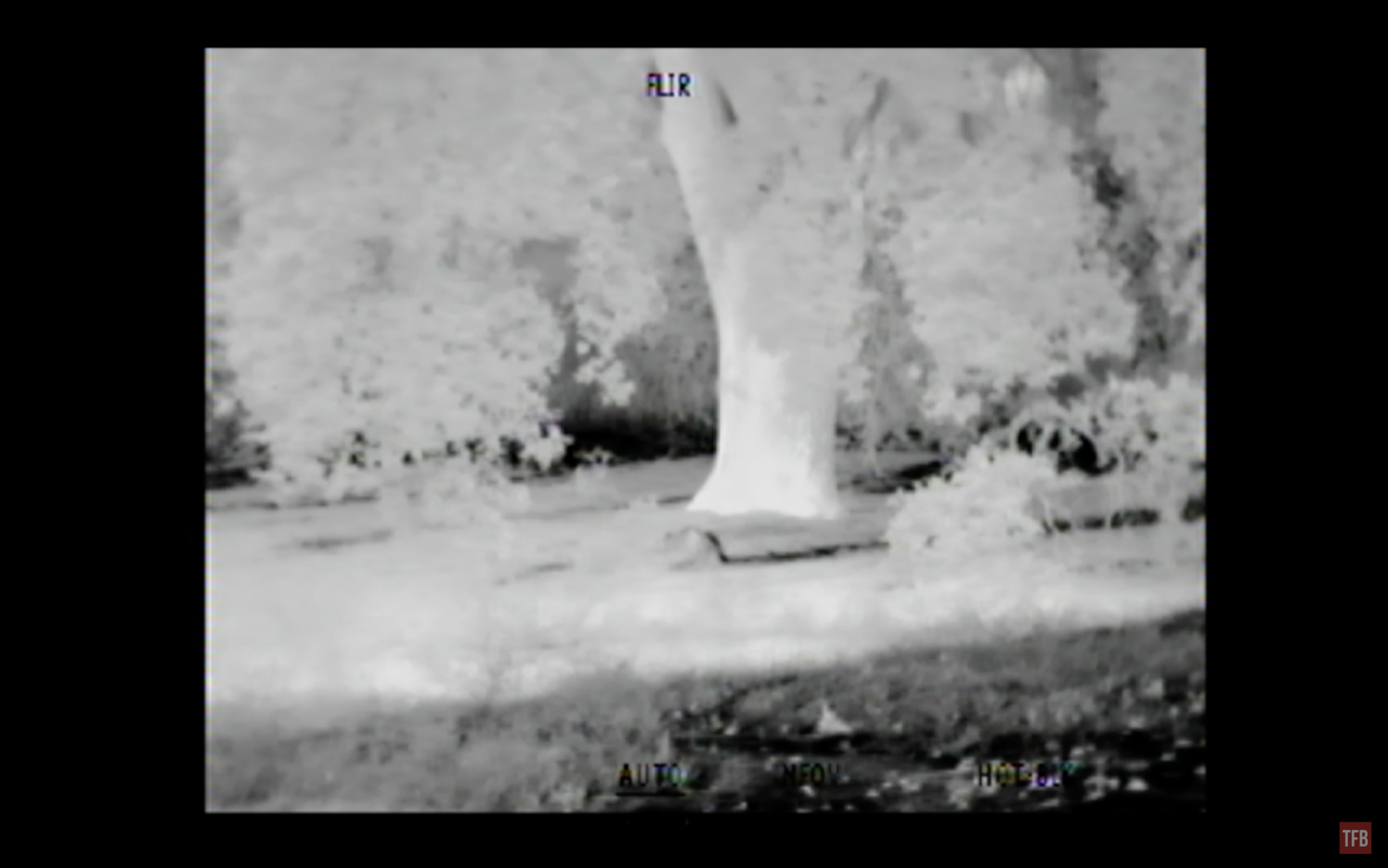
We used FRS radios and told him to relocate. Once he did, he blended in better. Out of curiosity, I asked him to stand against the tree trunk. You can see he stands out from this contrast.
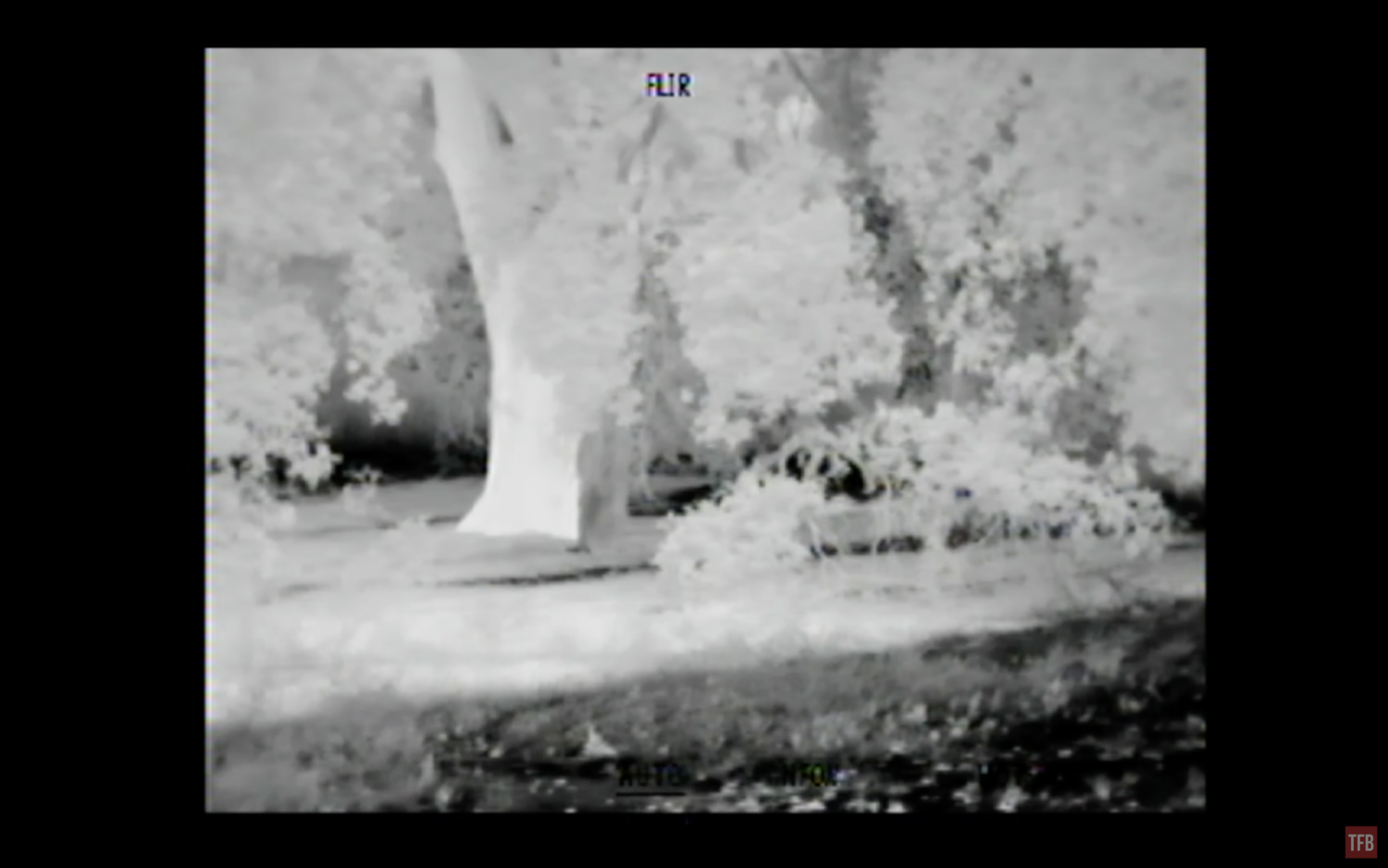
Next, we had him move to the left into the shade of the tree where there were some tall grasses. Can you spot him in the screenshot below? If I didn’t know where he was, I would not be able to detect him. But since I knew where he was, I knew what to look for. You can see a small sliver of white coolness colder than the grass.
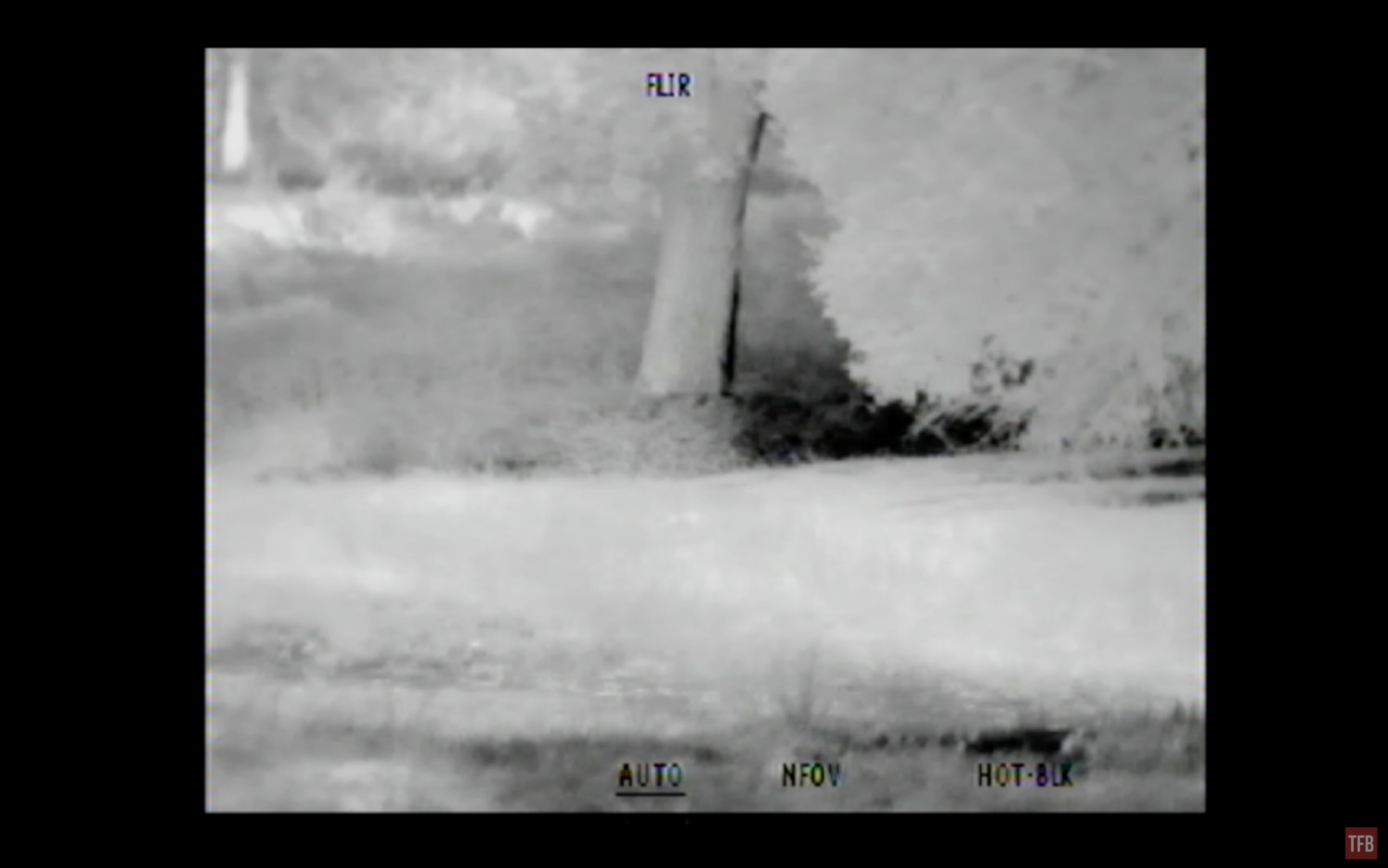
Then we had him take a knee and you can see the Phantom Ghillie out in the open.
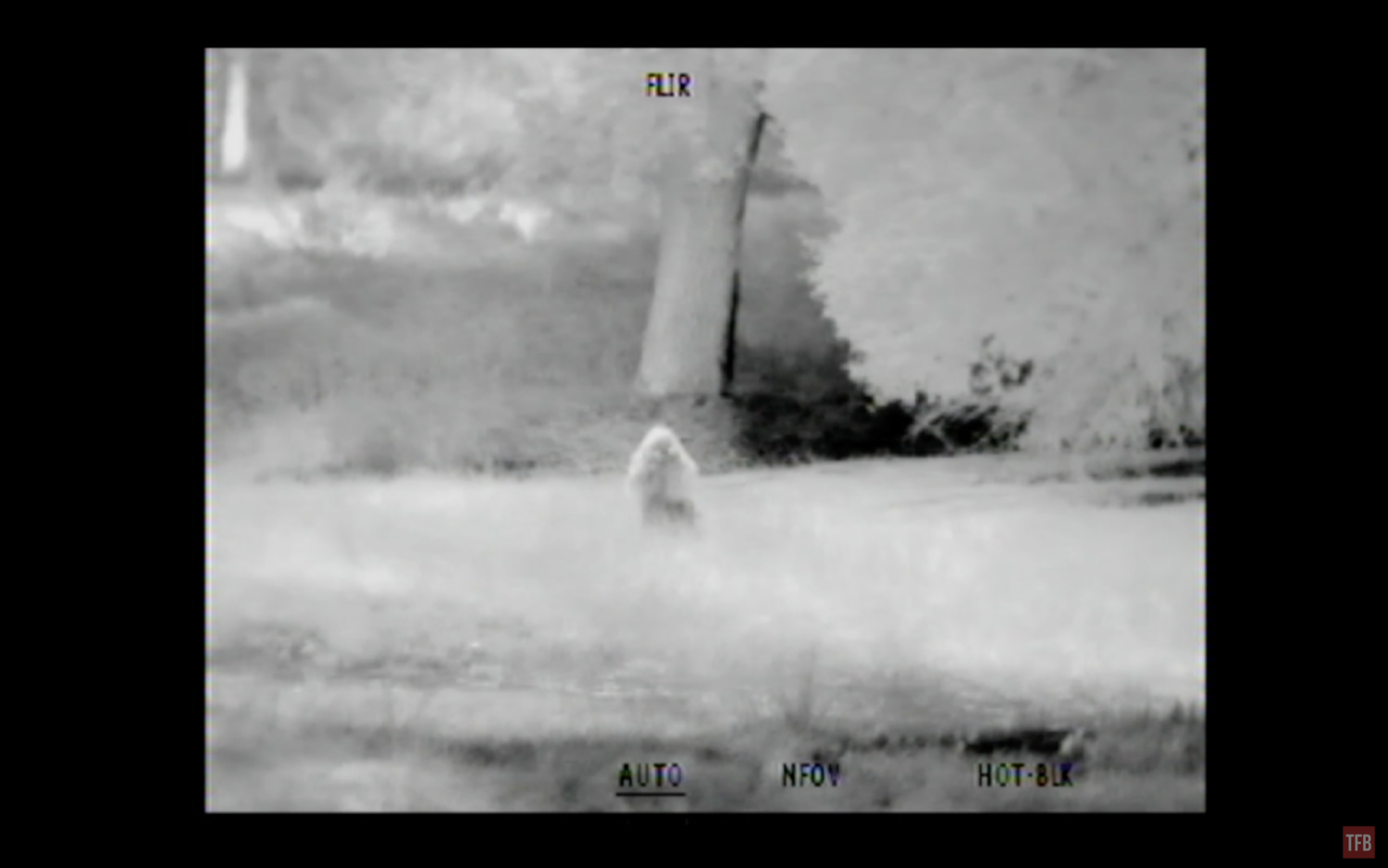
We took a break and waited for night to fall, hoping it would cool down more. It only got down to 75ºF. I switched to the JIM LR. Can you spot David? The JIM LR is set to white hot. So far all these tests are performed rather close. He was 200 yards away.
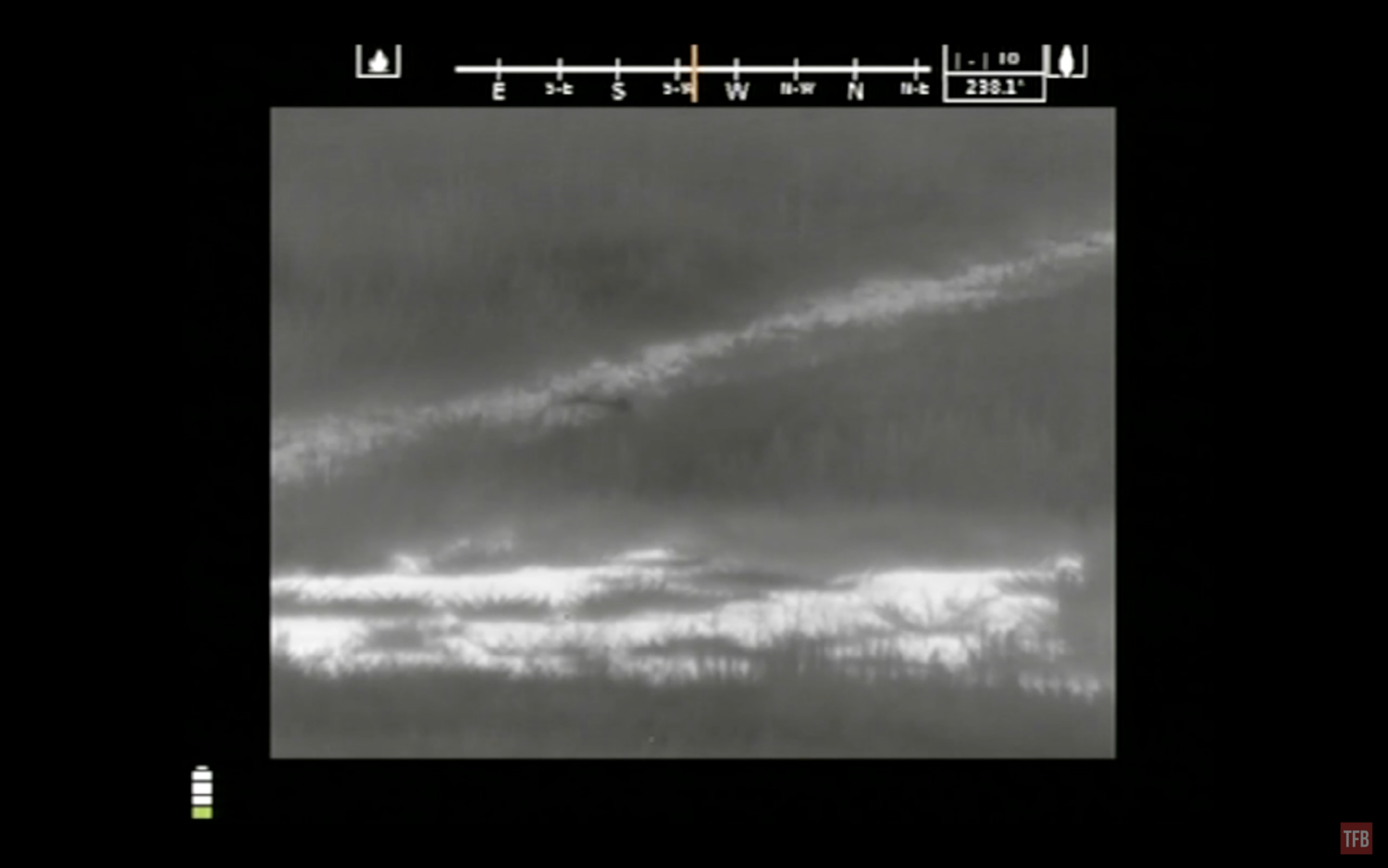
David’s back is turned to us.
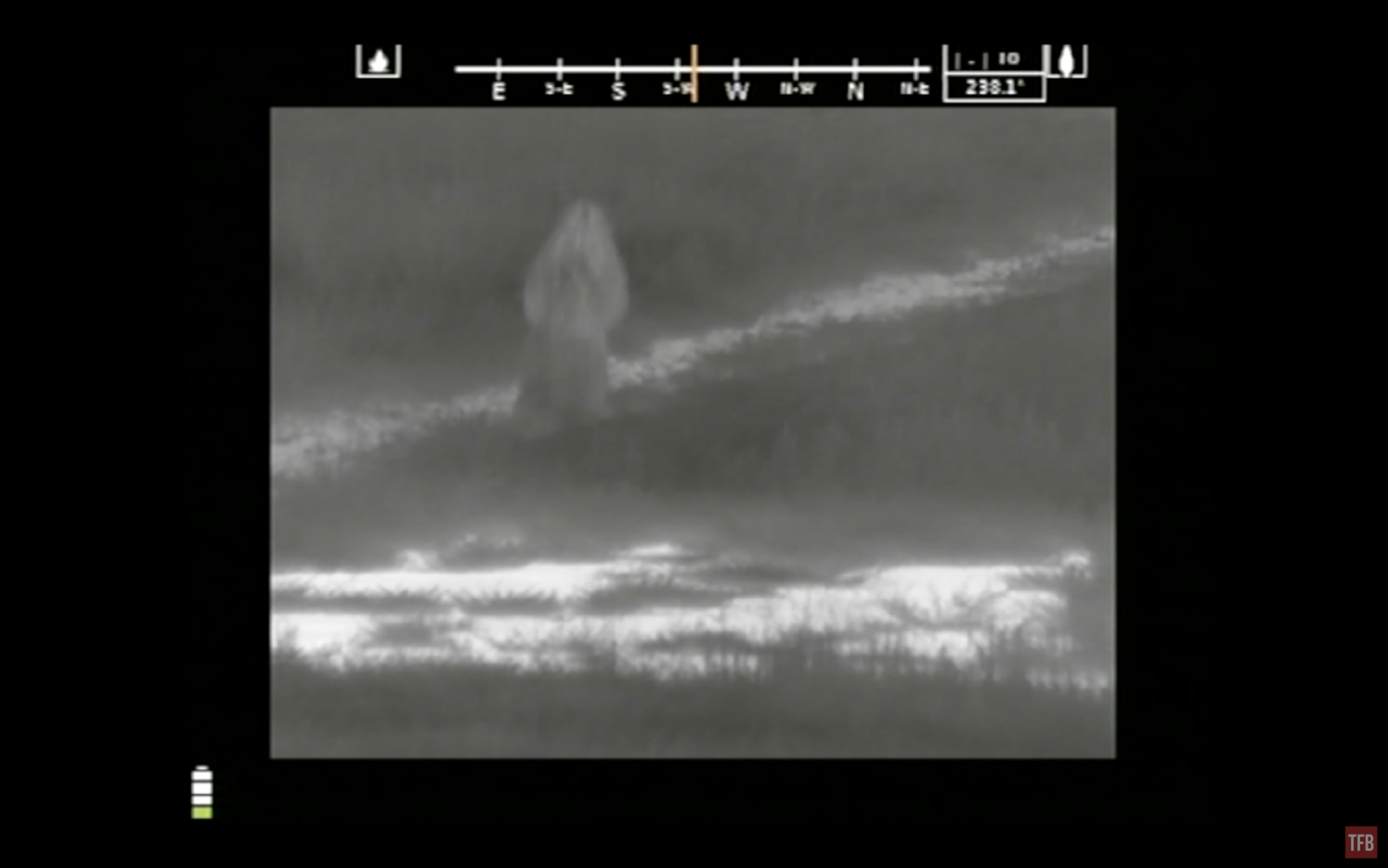
Here is what it looks like when he faces us.
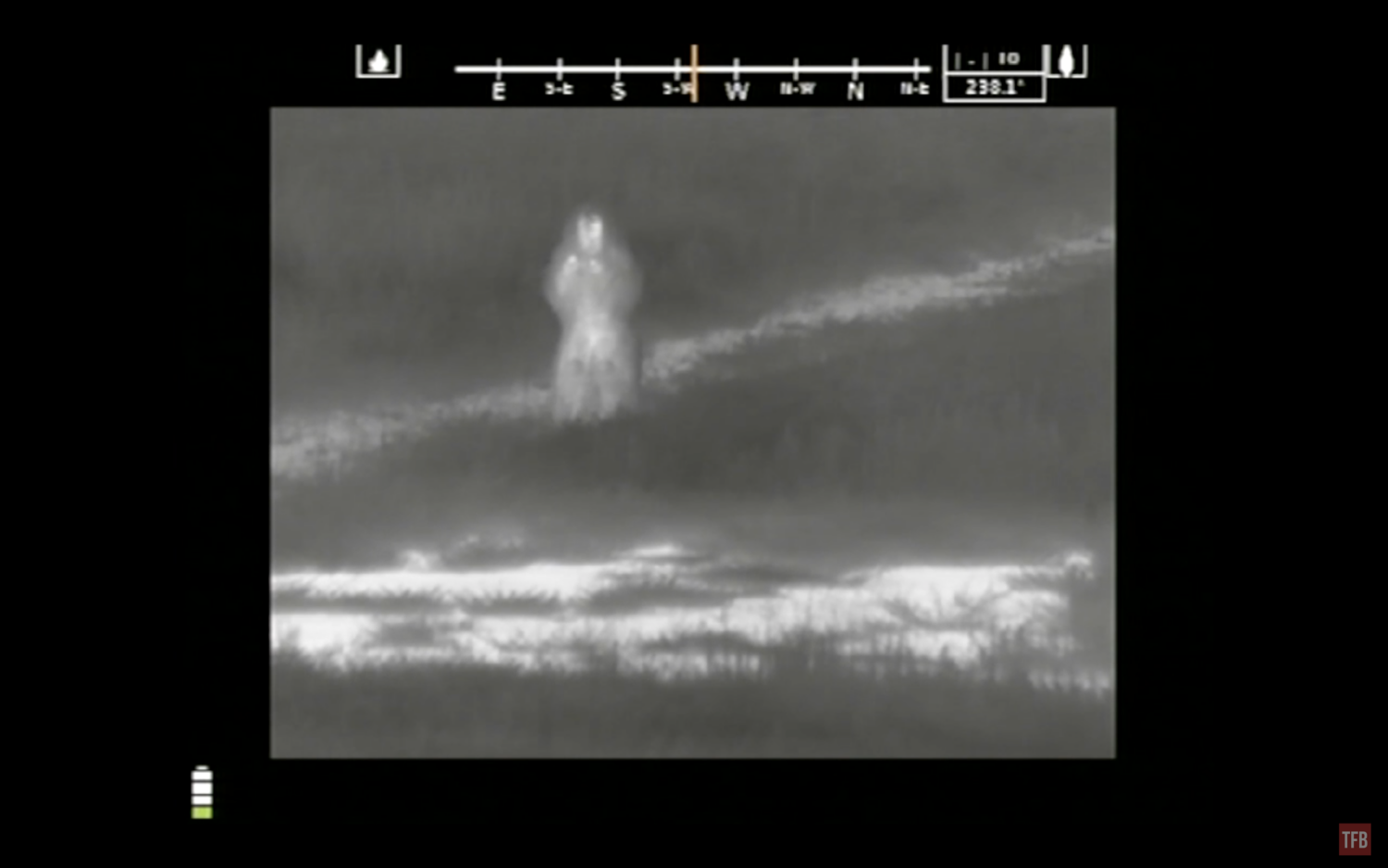
Here is a perfect example of cover and concealment. Using the natural environment to hide your thermal signature. The Phantom Ghillie helps.
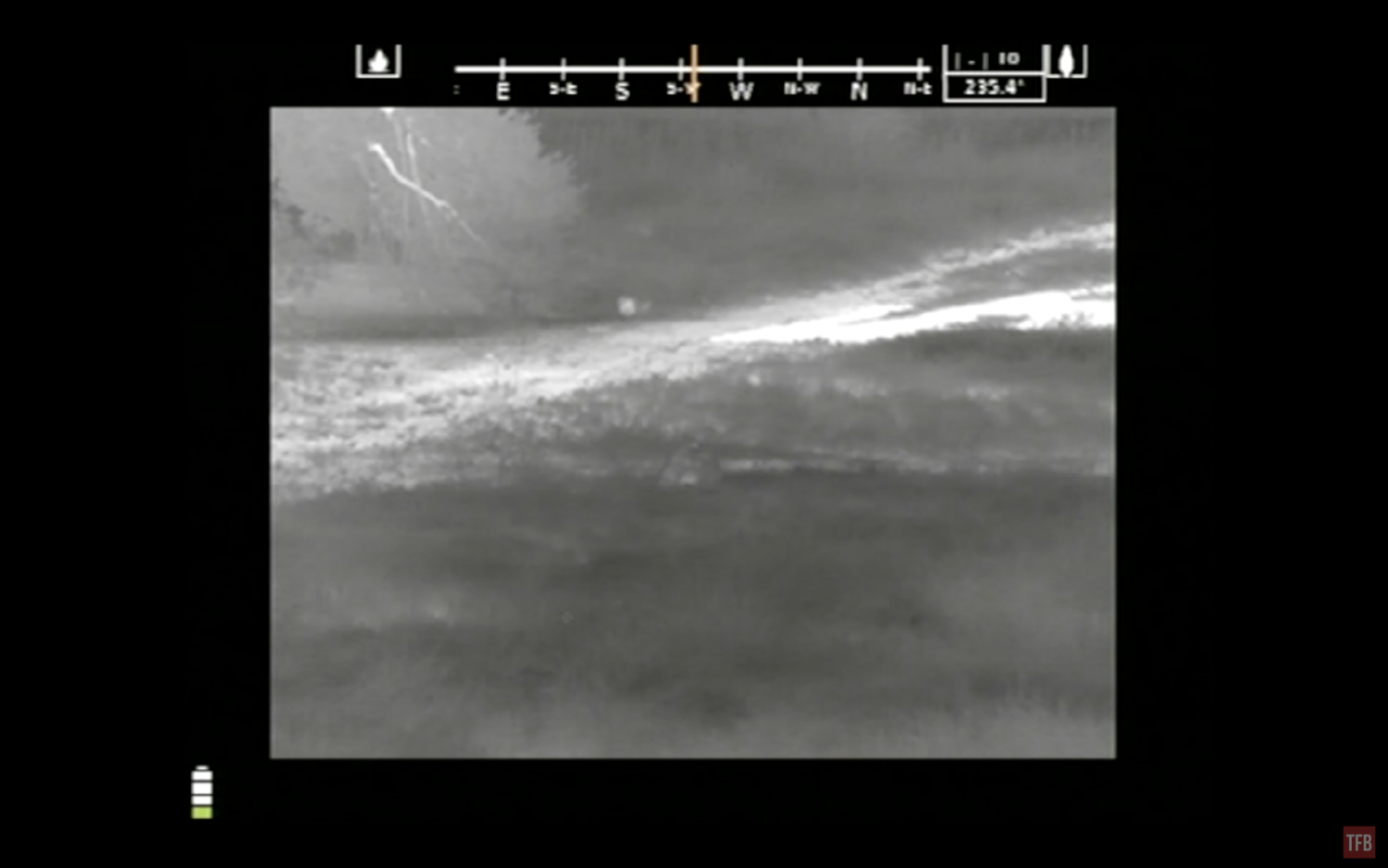
But once David lifts his head to look at us, I can see it in the JIM LR.
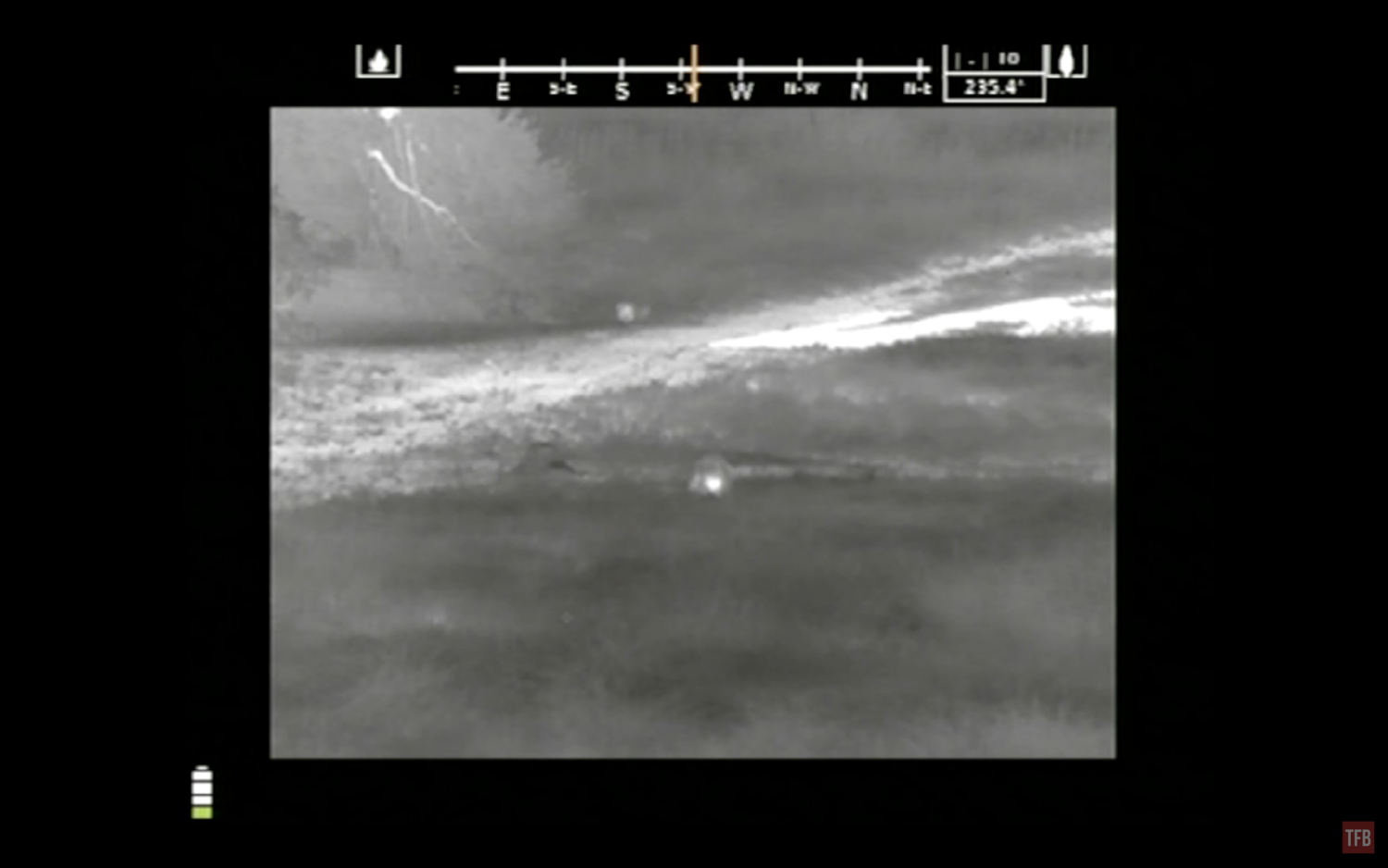
Due to the testing site, there was only one spot that had a clear line of sight and did not require hiking up a mountain where we could test the Phantom Ghillie far. The images were taken 700 yards away. Below is the worst-case scenario. Showing how well the Phantom Ghillie is at mitigating David’s heat signature.
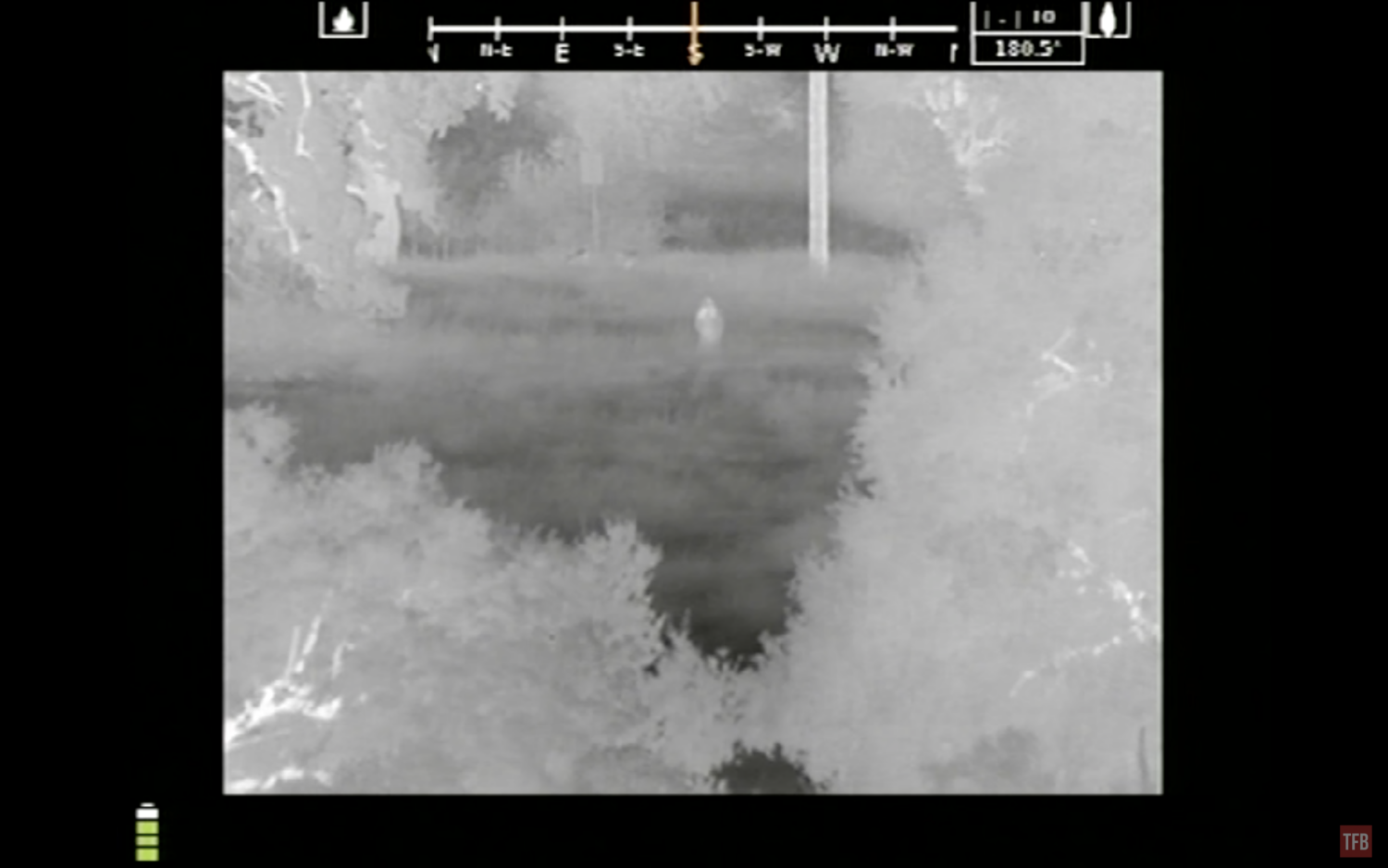
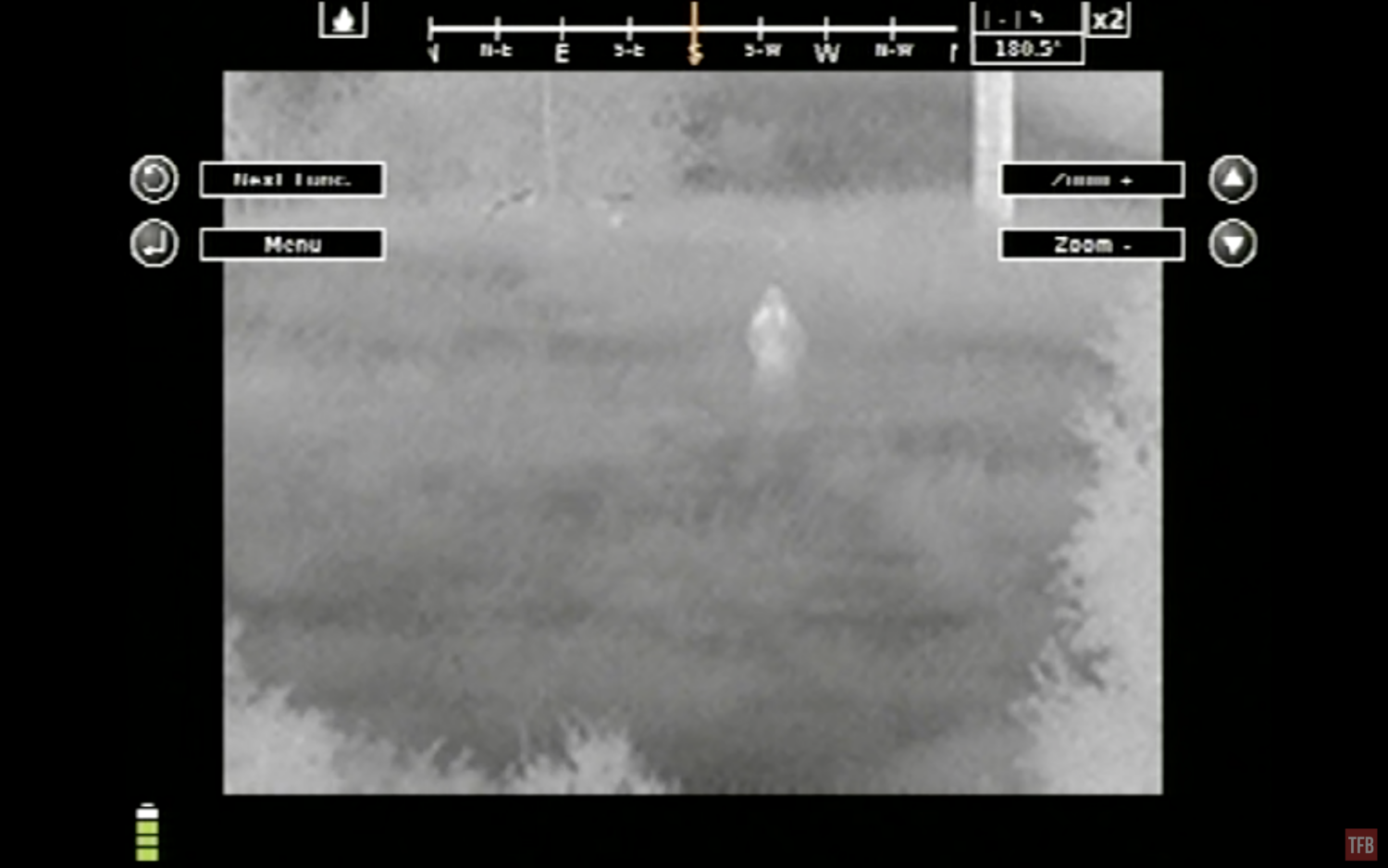
Below he is prone and has his head raised to look back at us.
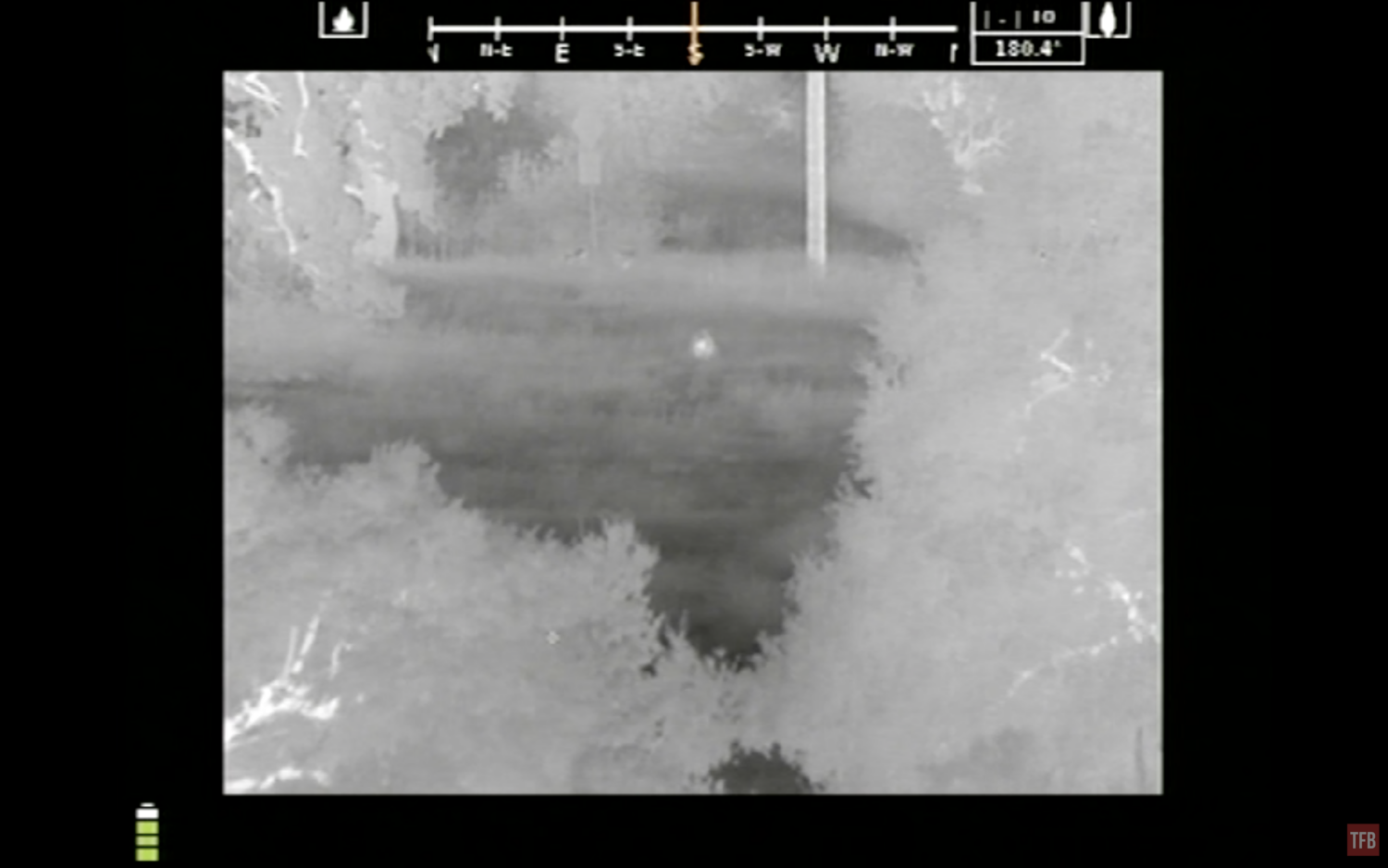
This is how much one would show up without any thermal camouflage.
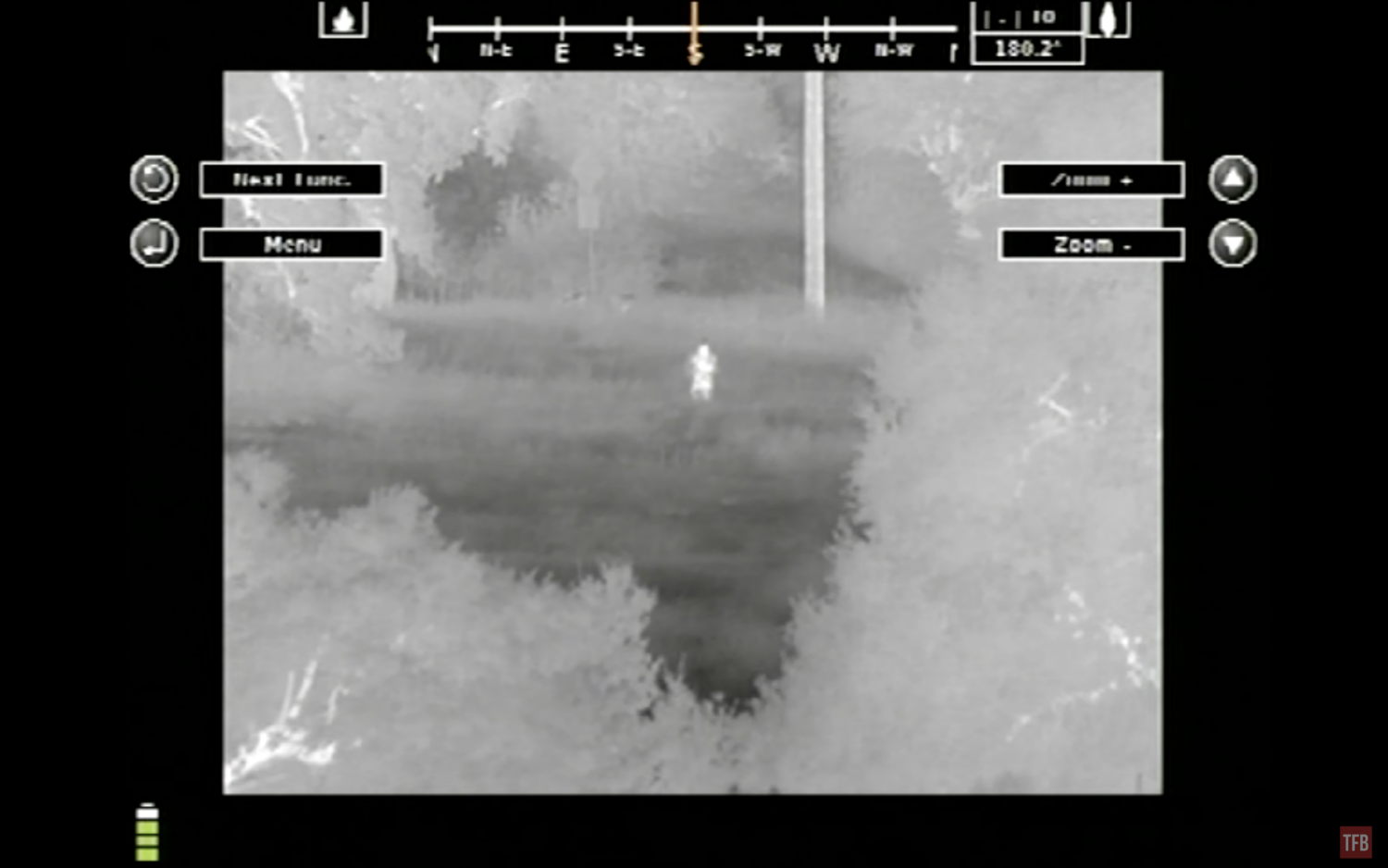
For due diligence, I checked the Phantom Ghillie using my PVS-27 and spotting scope. This was a dark night, there was no moon. The dark colors make the ghillie stand out against the lighter grass he is sitting in.

Final Observations Of The Phantom Ghillie
This was an interesting first test. However, it is not conclusive. I used some very expensive cooled MWIR thermal sensors to detect and observe the Phantom Ghillie. I was also looking at it very close, even at a distance, with optical zoom and afocal magnifiers. There was a test where we had David play hide-and-seek however I was only able to detect him one out of three attempts.
The Phantom Ghillie has potential. It is still a tool that requires understanding on the user’s part. This is not Harry Potter’s cloak of invisibility. You need to know its weaknesses and start thinking about areas of exposure. Things like your hands, face and feet can stick out and give you away. You also would not be trying to hide out in the wide open with brightly colored grass while your Phantom Ghillie has dark fibers. It worked great when David was actively trying to hide using tress and bushes to help hide him.
As I said, this test was not conclusive. So I talked to Phantom Defense and got approval to borrow the ghillie and resume testing it. The first thing to address is the color of the fibers. While I don’t think the color would affect its thermal mitigation, if you think about extremes like white or black, then the color will affect its ability to absorb and reflect heat. So stay tuned for next week’s Phantom Ghillie Part 2 of 3. I took the entire ghillie apart and built it back up with lighter colors and tested it at 1300 and 700 yards away. Then the following week will be the conclusion with the final test part 3 of 3. Where I test the Phantom Ghillie against my thermal drone. The results are very interesting.
 Your Privacy Choices
Your Privacy Choices
